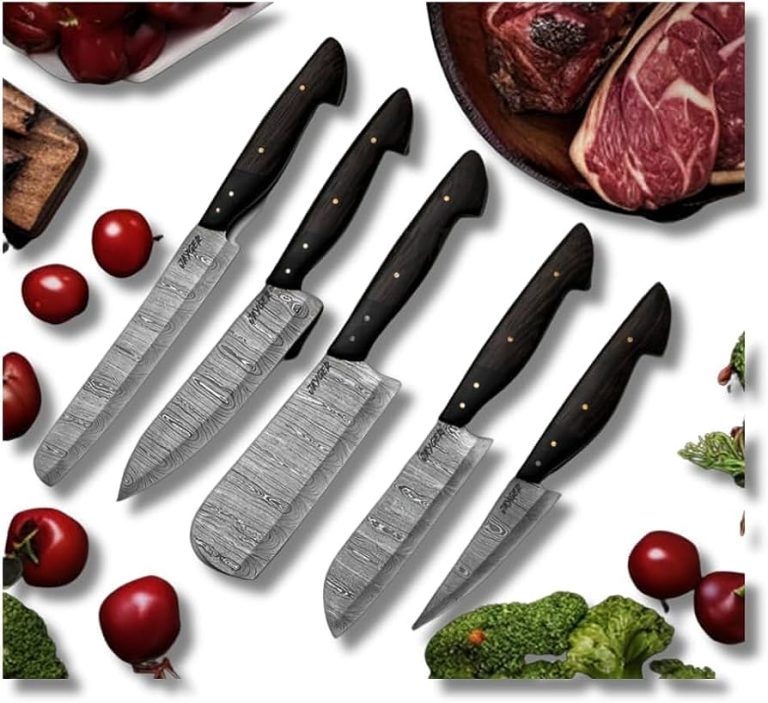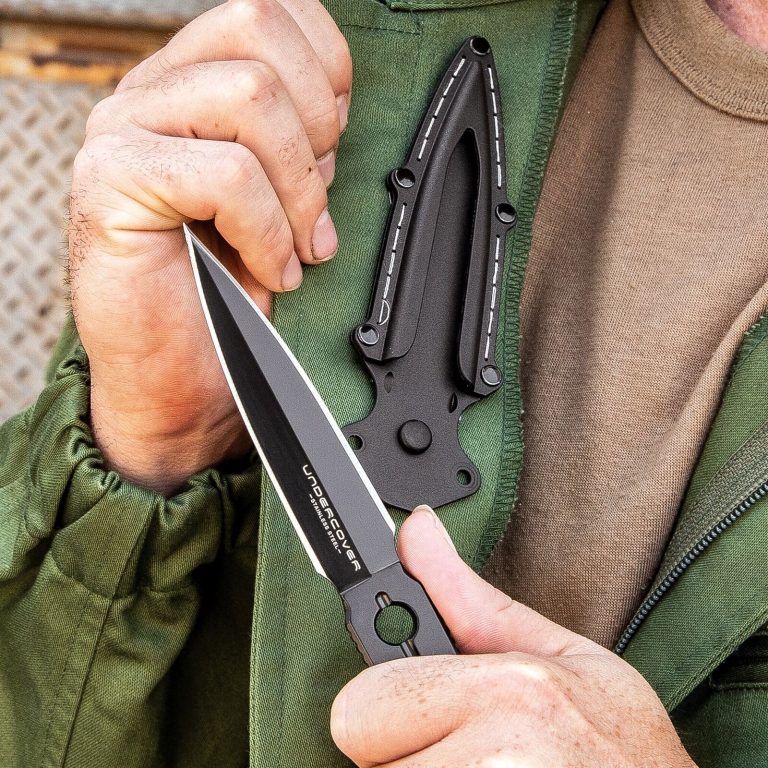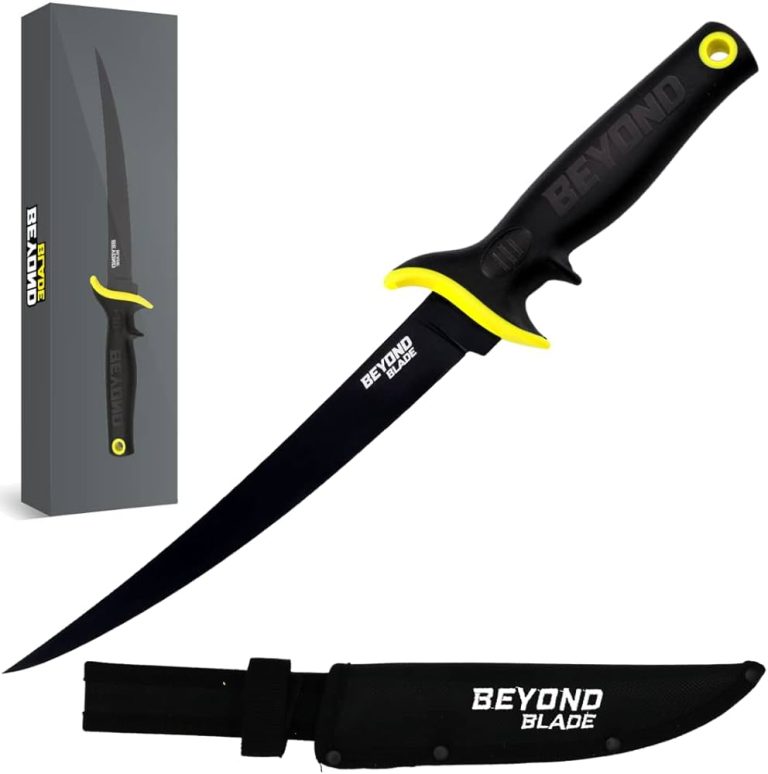The History And Evolution of Hunting Knives
The history and evolution of hunting knives can be traced back to ancient civilizations, where early humans crafted primitive blades for survival and hunting purposes. These knives have evolved over time, adapting to the changing needs and advancements in technology.
From simple stone tools to the modern-day, versatile hunting knives, this tool has played a crucial role in human history, providing utility and aiding in various tasks like processing game, preparing food, and self-defense. Over the centuries, hunting knives have become more durable, efficient, and specialized, designed to meet the demands of different environments and hunting techniques.
Today, they are crafted from high-quality materials and boast innovative features that make them essential tools for hunters and outdoor enthusiasts alike. The history and evolution of hunting knives tell a story of human ingenuity and the constant pursuit of perfection in tool design.
Early Beginnings Of Hunting Knives
The History And Evolution of Hunting Knives
Early hunting tools used by ancient civilizations
Early hunting knives, also known as hunting tools, played a vital role in the survival and sustenance of ancient civilizations. These primitive tools were initially constructed using materials readily available in the environment, such as bone, stone, and wood.
The purpose of these early hunting knives was to facilitate hunting and butchering of animals. They were primarily designed for cutting, slicing, and skinning. With a sharp blade and a sturdy handle, these knives provided the necessary tools for early hunters to procure food.
Through the ages, hunting knives evolved alongside human advancements. As metalworking techniques emerged, ancient civilizations began crafting hunting knives from bronze, iron, and steel. These materials offered improved durability and sharpness, empowering hunters with more effective tools.
The history and evolution of hunting knives reflect the ingenuity of human civilizations and their quest for survival. From humble beginnings as primitive tools to the finely crafted knives we have today, the development of hunting knives showcases the progress of human innovation and technology.

Credit: www.theknifehub.com
Key Developments In The Evolution Of Hunting Knives
Key Developments in the Evolution of Hunting Knives
Advancements in materials and technologies for knife making
Hunting knives have undergone significant changes throughout history, with continual advancements in materials and technologies shaping their evolution. The development of stronger and more durable materials such as stainless steel and Damascus steel has revolutionized knife making. These materials offer enhanced sharpness, corrosion resistance, and longevity in hunting knives.
In recent years, advancements in technology have further contributed to the evolution of hunting knives. The introduction of folding knives has had a profound impact on hunting. These knives provide a safer and more convenient option for hunters, allowing for easy storage and quick accessibility in the field. Their portability and versatility have made them a popular choice among modern hunters.
Additionally, the implementation of ergonomic designs in hunting knives has improved user comfort and handling. Modern knife manufacturers prioritize user experience by incorporating features such as grip-enhancing textures, balanced weight distribution, and finger guards. These ergonomic designs ensure a secure and comfortable grip, reducing the risk of accidents during hunting activities.
Famous Hunting Knives Throughout History
Hunting knives have a rich history that spans across centuries. These versatile tools have evolved over time, with each design reflecting the needs and preferences of different eras. Throughout history, famous individuals have relied on iconic hunting knives to pave their way in the outdoors. These knives have become synonymous with their wielders and carry fascinating stories and anecdotes. One such legendary knife is the “Bowie Knife,” named after the famous American frontiersman James Bowie. With its distinctive design and historical significance, the Bowie Knife is a symbol of American survivalism. Another notable hunting knife is the “Randall Made Knives,” which gained prominence during World War II and remains highly sought after by collectors today. Other famous hunting knives include the “Buck 110 Folding Hunter” and the “Morseth Knife,” both cherished for their functionality and craftsmanship. These renowned hunting knives serve as testaments to the enduring legacy of these remarkable tools.
Hunting Knives In Modern Times
| Blog post title: | The History And Evolution of Hunting Knives |
| Heading: | Hunting Knives in Modern Times |
| Subheading under heading: | Contemporary features and designs of hunting knives |
| Evolution of hunting knife handles and ergonomic principles | Hunting knives have undergone significant advancements in terms of their handles and ergonomic features. With the aim of improving user comfort and performance, modern hunting knife manufacturers have incorporated innovative designs and materials into their products. One notable change in hunting knife handles is the shift from traditional materials like wood and bone to more durable options such as rubber, synthetic composites, or fiber-reinforced polymers. These modern handle materials offer enhanced grip and durability, ensuring a secure and comfortable hold even in challenging weather conditions or when wet. Ergonomic principles have also played a crucial role in the evolution of hunting knife handles. Manufacturers now pay close attention to factors like handle shape, finger grooves, and finger guards to optimize grip and reduce hand fatigue during extended usage. Overall, the evolution of hunting knife handles and ergonomic principles has resulted in improved performance, comfort, and safety for modern hunters. These advancements ensure that hunting knives remain reliable tools for outdoor enthusiasts in various hunting situations. |
Assessing The Performance Of Hunting Knives
Hunting knives have a rich history that dates back thousands of years, with advancements in materials and design leading to their evolution over time. When assessing the performance of hunting knives, it is important to understand the different types of blades available to cater to varying hunting needs.
There are several factors to consider when selecting a hunting knife for specific purposes. The type of blade, such as drop point, clip point, or gut hook, determines the knife’s functionality for tasks like skinning, field dressing, or piercing. Additionally, the blade material, such as stainless steel or carbon steel, affects durability and corrosion resistance.
The handle material is also a critical factor to consider, as it impacts grip and comfort during extended use. Popular choices include bone, wood, rubber, and synthetic materials like G10 or Micarta. The knife’s overall length, weight, and balance are important considerations for maneuverability and control in different hunting scenarios.
By understanding these factors and carefully considering your specific hunting needs, you can choose a hunting knife that offers optimal performance and enhances your outdoor experience.
Preservation And Collection Of Hunting Knives
The preservation and collection of hunting knives have become popular hobbies among enthusiasts who appreciate the rich history and craftsmanship of these essential tools. Collecting hunting knives not only allows individuals to showcase unique pieces but also provides insight into the evolution of these implements over time.
Proper storage of hunting knife collections is crucial to ensure their longevity and maintain their value. **Tips for storage and maintenance include:**
- Storing knives in a dry environment to prevent rust and corrosion.
- Using appropriate knife storage cases or racks to protect the blades and handles from damage.
- Regularly cleaning and oiling the knives to prevent build-up or deterioration.
- Avoiding exposure to extreme temperatures or humidity levels, which can cause warping or discoloration.
- Ensuring each knife is properly labeled or documented, indicating its historical significance or unique features.
- Periodically inspecting the collection for any signs of wear or damage, seeking professional restoration when necessary.
For avid knife collectors, the preservation and care of hunting knife collections hold immense value. By following these storage and maintenance practices, enthusiasts can enjoy their treasured pieces for years to come.</p
Hunting Knives As Multi-Purpose Tools
The History And Evolution of Hunting Knives
Hunting knives have a long and rich history, evolving from simple sharp blades to multifunctional tools. These versatile instruments are not limited to hunting activities alone but have found utility in a wide range of situations.
Utilitarian uses of hunting knives beyond hunting activities:
- Survival situations: Hunting knives have proven invaluable in survival scenarios, helping individuals cut ropes, start fires, build shelters, and even provide first aid.
- Camping and hiking: When venturing into the wilderness, hunting knives can be used for food preparation, clearing paths, and even cutting through dense vegetation.
- Fishing expeditions: Whether cutting fishing lines, scaling fish, or gutting catches, hunting knives are essential tools for anglers.
- Outdoor sports: From rock climbing to mountaineering, hunting knives assist in various tasks such as cutting ropes, removing obstacles, and self-defense.
These knives have become popular due to their reliability and adaptability. They continue to play a crucial role in outdoor activities where their durability, versatility, and sharpness are valued.
Influence Of Hunting Knives On Popular Culture
The History And Evolution of Hunting Knives
Hunting knives have a fascinating history and their evolution over time has had a significant impact on popular culture. One aspect that cannot be overlooked is the portrayal of hunting knives in literature, movies, and television. These powerful blades have been featured in various forms of media, showcasing their importance and symbolism.
As an important tool for survival and self-defense, hunting knives have been depicted in literature, highlighting their role in adventure stories and wilderness settings. From classic novels to modern works of fiction, the presence of hunting knives adds a sense of danger and resilience.
On the silver screen, hunting knives have become synonymous with action-packed scenes. Whether it’s a hero using a knife in a critical moment or a villain brandishing one menacingly, these scenes create a lasting impact on the audience.
In addition to their portrayal in literature and movies, hunting knives have also made their mark on television. From survival shows to crime dramas, hunting knives are often showcased as tools of survival or weapons used by criminals.
These portrayals have had a profound impact on popular culture and branding. The symbolism associated with a hunting knife represents strength, adventure, and preparedness. This symbolism has been utilized by companies to create powerful branding and imagery. From outdoor gear brands to knife manufacturers, the hunting knife’s influence is undeniable.
Future Trends In Hunting Knife Design
The future of hunting knife design is constantly evolving, driven by a variety of innovative technologies and advancements. One significant trend shaping the future of hunting knives is the incorporation of sustainable and eco-friendly practices in their manufacturing.
Manufacturers are increasingly realizing the importance of reducing their carbon footprint and adopting environmentally responsible practices. They are exploring new materials and manufacturing techniques that minimize waste and promote sustainability. For instance, the use of recycled or renewable materials, such as sustainable wood or biodegradable plastics, is becoming more prevalent.
Another innovation in hunting knife design is the integration of advanced technologies. Modern hunting knives are being equipped with features like GPS systems, tracking devices, and multi-tool functionality. These advancements not only enhance the efficiency and effectiveness of hunting experiences but also improve safety and convenience for hunters.
Furthermore, ergonomics and user comfort are playing a crucial role in the development of future hunting knives. Manufacturers are focusing on creating designs that offer better grip, reduce fatigue, and prevent accidents.
Conclusion
Throughout history, hunting knives have played an essential role in the survival and advancement of mankind. From the primitive stone blades used by our ancestors to the finely crafted, technologically advanced knives of today, the evolution of these tools is a testament to human ingenuity and resourcefulness.
As we trace the history of hunting knives, we can see how they have adapted to the changing needs and environments of hunters, from simple cutting tools to multifunctional companions. The introduction of steel revolutionized the manufacturing process, allowing for sharper and more durable blades.
With the rise of technology, hunting knives have incorporated features such as ergonomic handles and specialized blade shapes for different hunting purposes. The continued progression of hunting knives showcases our ongoing quest for mastery over our environment and the appreciation we have for the tools that make it possible.
So, as we pass on this rich legacy to future generations, let us recognize the invaluable role that hunting knives have played in our history and cherish them as symbols of our deep connection to nature and our primal instincts.






